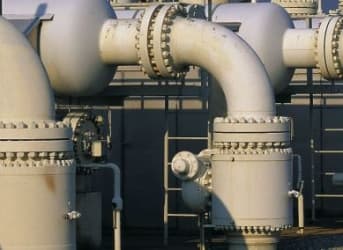China is in a pickle which it is well aware of – and attempting to fix – as it tries to wean itself off coal and ramp up its natural gas consumption. So here are some of the trials and tribulations faced by the world’s largest energy consumer around natural gas:
1) China is the world’s largest power generator, and has historically relied on coal to meet approximately 65% of its electricity generation needs (accounting for a half of the world’s coal demand). Natural gas on the other hand, accounted for approximately 3% of China’s electricity generation mix in 2012.

2) Driven by its need to tackle rising carbon emissions and pollution, the Chinese government has accordingly set an aggressive target of meeting 10% of its total energy consumption from natural gas by the end of this decade. This means demand would triple from 2012 levels to 420 Bcm (14.8 Tcf).
3) Accordingly, China is set to lead global natural gas demand growth in the coming years. Non-OECD nations are to account for 85% of global natural gas demand growth from 2013-2019, with China accounting for a third of this.
4) China’s aggressive target is going to have to in part be met by imports, as China has just halved its shale gas production target from 60 – 100 Bcm (2.1 – 3.5 Tcf) to 30 Bcm (1.06 Tcf) by 2020. This would meet only 1% of China’s electricity generation.
5) The reduction in this production target is despite China having the largest technically recoverable shale gas reserves on the planet at 1,115 Tcf (31,600 Bcm). Problems arise in pursuing these reserves because they are in remote, mountainous regions, with a lack of infrastructure in place and at deeper levels than in the US. And this is all before addressing the issue of water scarcity.
6) Imports are in the form of both pipeline imports and LNG. China is expected to have 16 LNG import terminals operational by 2015, with 7 currently under construction. China received its first LNG imports in 2006, with pipeline imports starting in 2010:

7) There is some positive news despite the downward production revisions: drilling costs in China are down 35% from two years ago as Chinese operators join forces with North American services companies.
8) Regarding imports, Australia is China’s largest LNG supplier. This relationship will only strengthen given a number of joint ventures in place, and as Australia quadruples its LNG export capacity to become the world’s largest exporter (passing Qatar) by the end of the decade.
9) China is also making strides on the pipeline import front, with CNPC entering into a 30-year, $400 billion agreement with Russia’s Gazprom to receive 38 Bcm (1.34 Tcf) a year of natural gas from Siberia starting in 2018.
10) Nonetheless, China is attempting to meet the majority of its natural gas needs from domestic production by 2040:

So there you have it – China’s predicament of being in a pickle. Regardless of how it meets its natural gas targets in the coming years – from domestic production or imports – the sheer increase is going to have a considerable impact on the global energy landscape.
By Matt Smith of Energy Burrito



















There may eventually be too many exporters and too few buyers. The race to market is the thing. Do you agree?